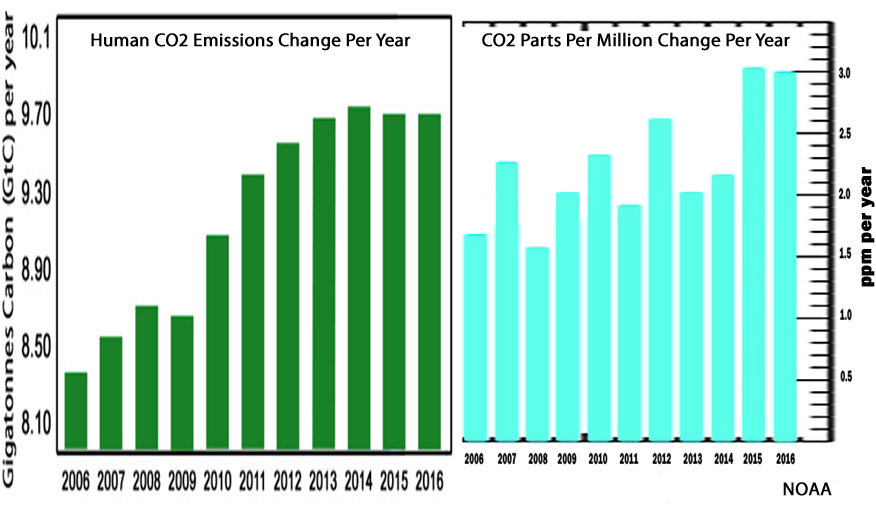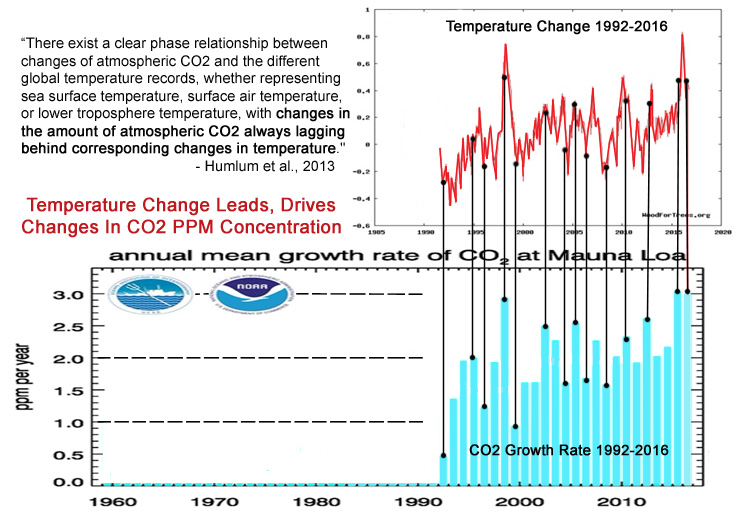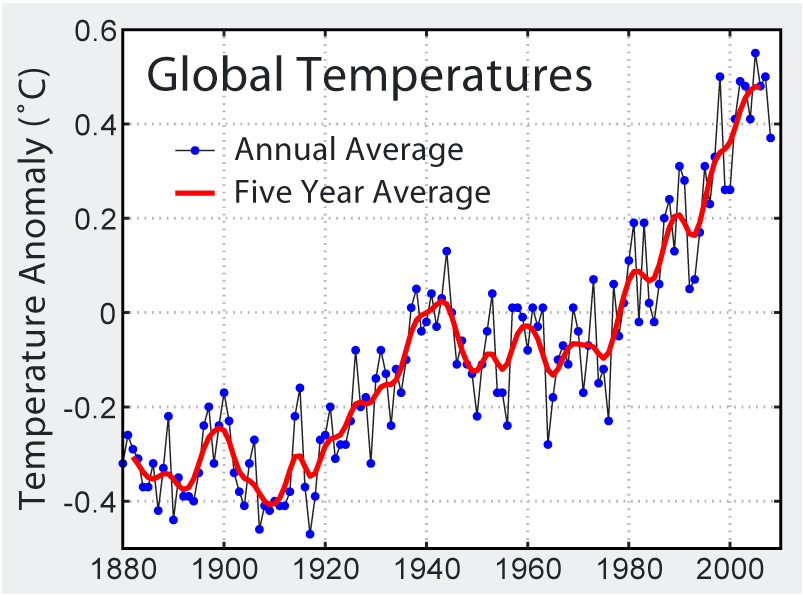The CO2/Temperature correlation over the 20th Century
The kind of graphical representations here are NOT disputed and show a good correlation between increases in CO2 levels and temperature. Furthermore even IF the case would be less clear, isn't it reasonable to assume the worst when talking about something that has severe consequences for the world and act accordingly?
The only actual correlation between temperature increase and CO2 in the long term is that CO2 increases after the temperature rises. That would be due to the fact that warmer oceans hold less CO2 than cold oceans.
According to NASA...between 1850 and 1910, the earth experienced a cooling of .1 degree while CO2 increased by 15ppm
Between 1910 and 1940 the earth experienced a warming of .45 degrees while CO2 increased by 11ppm
Between 1940 and 1970 the earth cooled by .1 degree while CO2 increased by 23ppm
Between 1977 and 2001 the earth warmed by .35 degree while CO2 increased by 37ppm
Between 2001 and 2014 the earth cooled by .04 degree while CO2 increased by 27ppm
sometimes an increase in CO2 accompanies warming...sometimes it accompanies cooling...clearly the change isn't the result of CO2. In fact, when the earth began descending into the ice age we are currently climbing out of, atmospheric CO2 was real close to 1000ppm.
The fact is that there is a real question as to whether we have any real impact on the amount of CO2 in the atmosphere. We certainly don't produce enough of it to overcome the year to year variation in the earth's own CO2 making machinery.
Munshi, 2015
https://www.researchgate.net/public...SPHERIC_CO2_TO_ANTHROPOGENIC_EMISSIONS_A_NOTE
clip:
“
A necessary condition for the theory of anthropogenic global warming isthat there should be a close correlation between annual fluctuations of atmospheric CO2 and the annual rate of anthropogenic CO2 emissions.Data on atmospheric CO2 and anthropogenic emissions provided by the Mauna Loa measuring station and the CDIAC in the period
1959-2011 were studied using detrended correlation analysis to determine whether, net of their common long term upward trends, the rate of change in atmospheric CO2 is responsive to the rate of anthropogenic emissions in a shorter time scale from year to year. … [
R]esults do not indicate a measurable year to year effect of annual anthropogenicemissions on the annual rate of CO2 accumulation in the atmosphere.”
Flohn, 1982
https://www2.meteo.uni-bonn.de/bibliothek/Flohn_Publikationen/K287-K320_1981-1985/K299.pdf
clip:
“The recent increase of the CO2-content of air varies distinctly from year to year, rather independent from the irregular annual increase of global CO2-production from fossil fuel and cement, which has since 1973 decreased from about 4.5 percent to 2.25 percent per year (Rotty 1981).”
“Comparative investigations (Keeling and Bacastow 1977, Newll et al. 1978, Angell 1981) found a positive correlation between the rate of increase of atmospheric CO2 and the fluctuations of sea surface temperature (SST) in the equatorial Pacific, which are caused by rather abrupt changes between upwelling cool water and downwelling warm water (“El Niño”) in the eastern equatorial Pacific. Indeed the cool upwelling water is not only rich in (anorganic) CO2 but also in nutrients and organisms. (algae) which consume much atmospheric CO2 in organic form, thus reducing the increase in atmospehreic CO2. Conversely the warm water of tropical oceans, with SST near 27°C, is barren, thus leading to a reduction of CO2 uptake by the ocean and greater increase of the CO2. … A crude estimate of these differences is demonstrated by the fact that during the period 1958-1974, the average CO2-increase within five selective years with prevailing cool water only 0.57 ppm/a [per year], while during five years with prevailing warm water it was 1.11 ppm/a. Thus in a a warm water year, more than one Gt (1015 g) carbon is additionally injected into the atmosphere, in comparison to a cold water year.”
Humlum, et. al 2013
https://www.researchgate.net/public...spheric_carbon_dioxide_and_global_temperature
clip: “There exist a clear phase relationship between changes of atmospheric CO2 and the different global temperature records, whetherrepresenting sea surface temperature, surface air temperature, or lower troposphere temperature, with changes in the amount of atmospheric CO2 always lagging behind corresponding changes in temperature.”
(1) The overall global temperature change sequence of events appears to be from 1) the ocean surface to 2) the land surface to 3) the lower troposphere.
(2) Changes in global atmospheric CO2 are lagging about 11–12 months behind changes in global sea surface temperature.
(3) Changes in global atmospheric CO2 are lagging 9.5–10 months behind changes in global air surface temperature.
(4) Changes in global atmospheric CO2 are lagging about 9 months behind changes in global lower troposphere temperature.
(5) Changes in ocean temperatures appear to explain a substantial part of the observed changes in atmospheric CO2 since January 1980.
(6) CO2 released from anthropogenic sources apparently has little influence on the observed changes in atmospheric CO2, and changes in atmospheric CO2 are not tracking changes in human emissions.
(7) On the time scale investigated, the overriding effect of large volcanic eruptions appears to be a reduction of atmospheric CO2, presumably due to the dominance of associated cooling effects from clouds associated with volcanic gases/aerosols and volcanic debris.
(8) Since at least 1980 changes in global temperature, and presumably especially southern ocean temperature, appear to represent a major control on changes in atmospheric CO2.
And I could go on ad nauseum with paper after paper questioning whether we have any real influence on the amount of CO2 in the atmosphere. It seems that claiming that we are causing massive increases in CO2 is one of those things that everyone seems to know, but the data, when actually looked at, doesn't seem to support.



